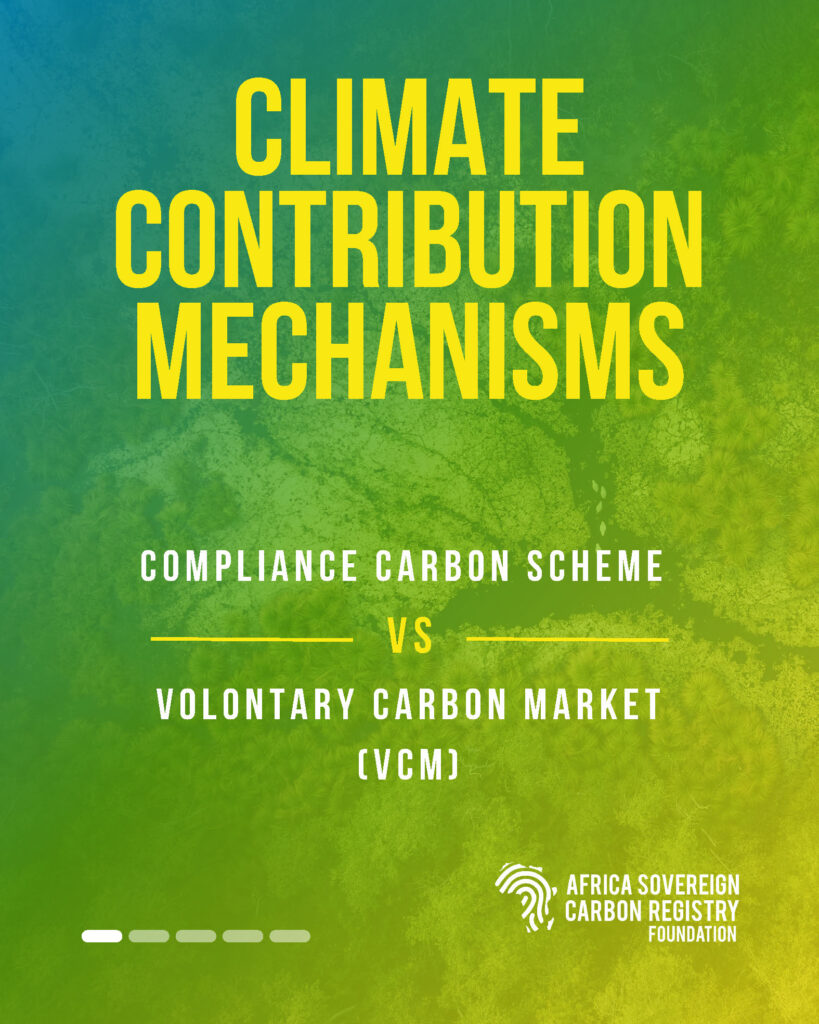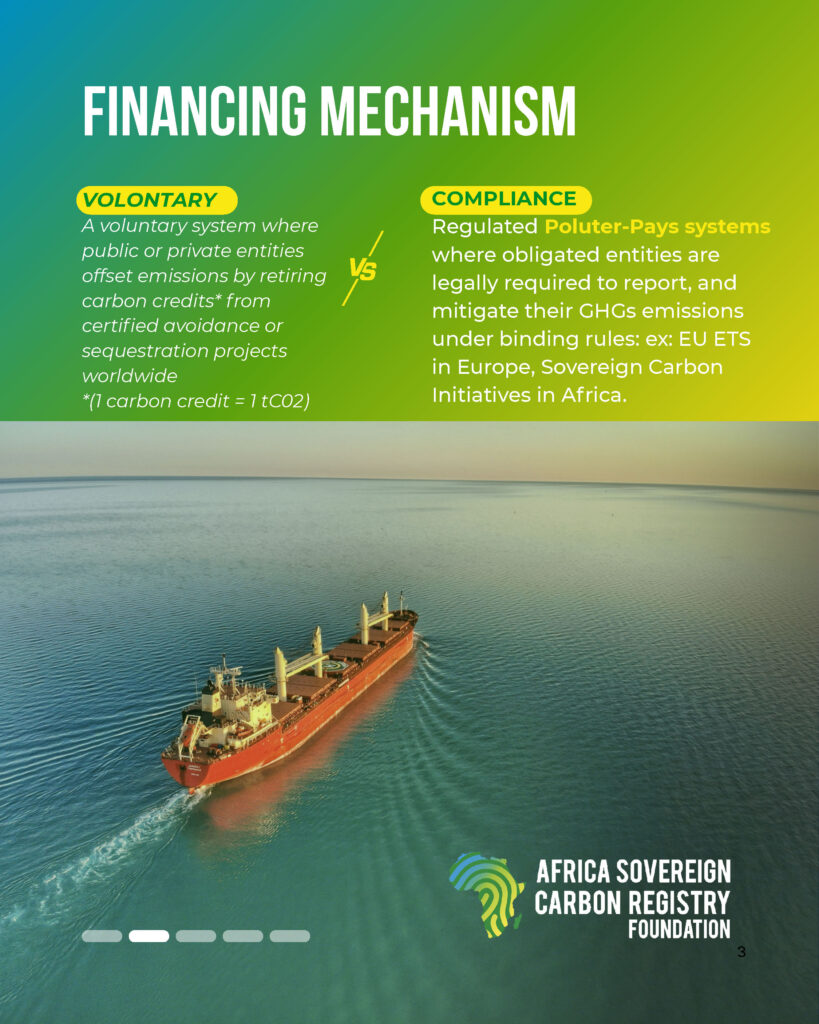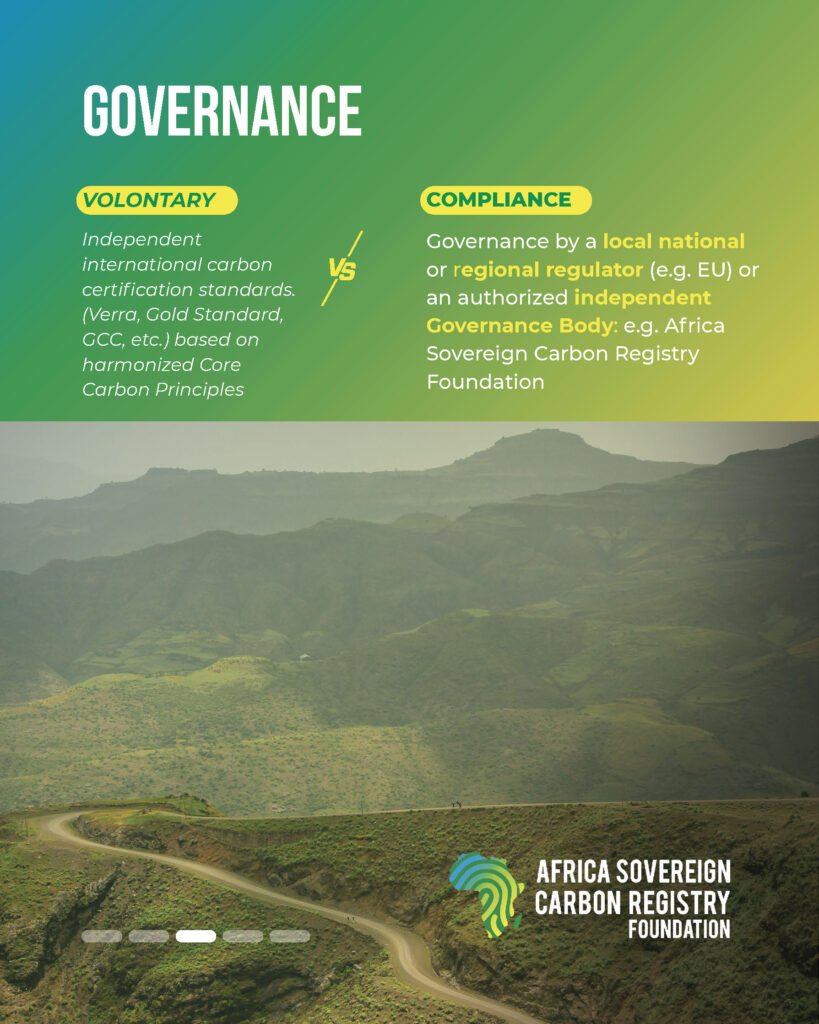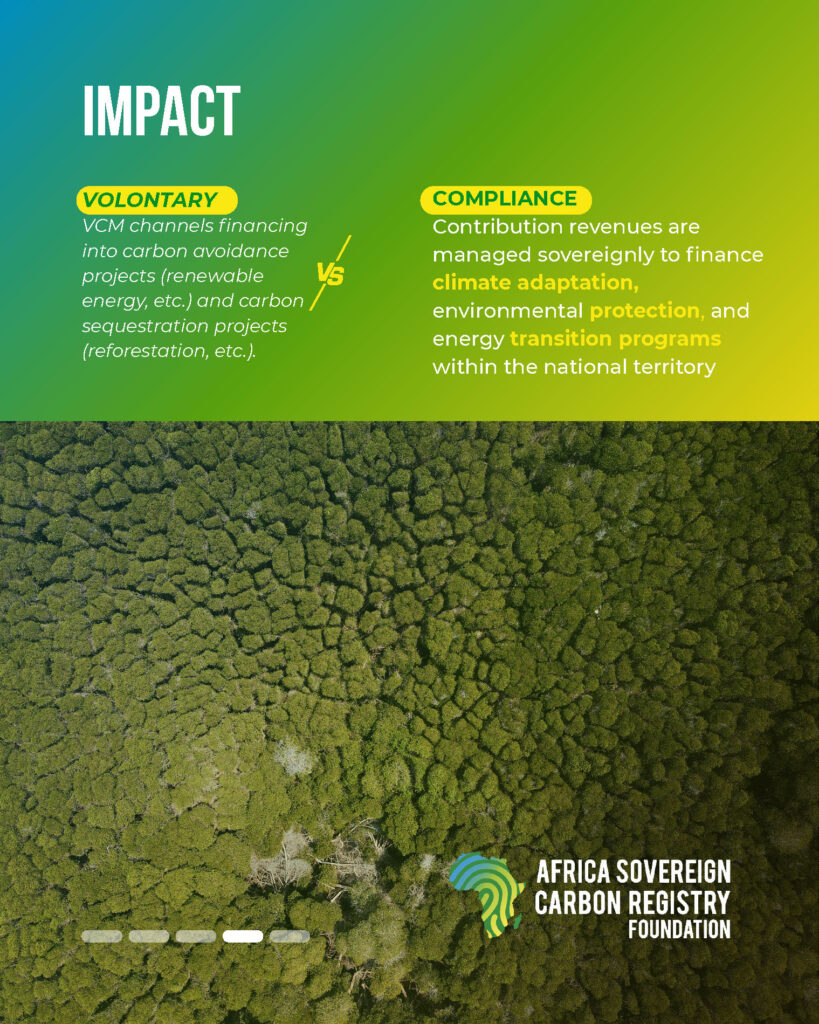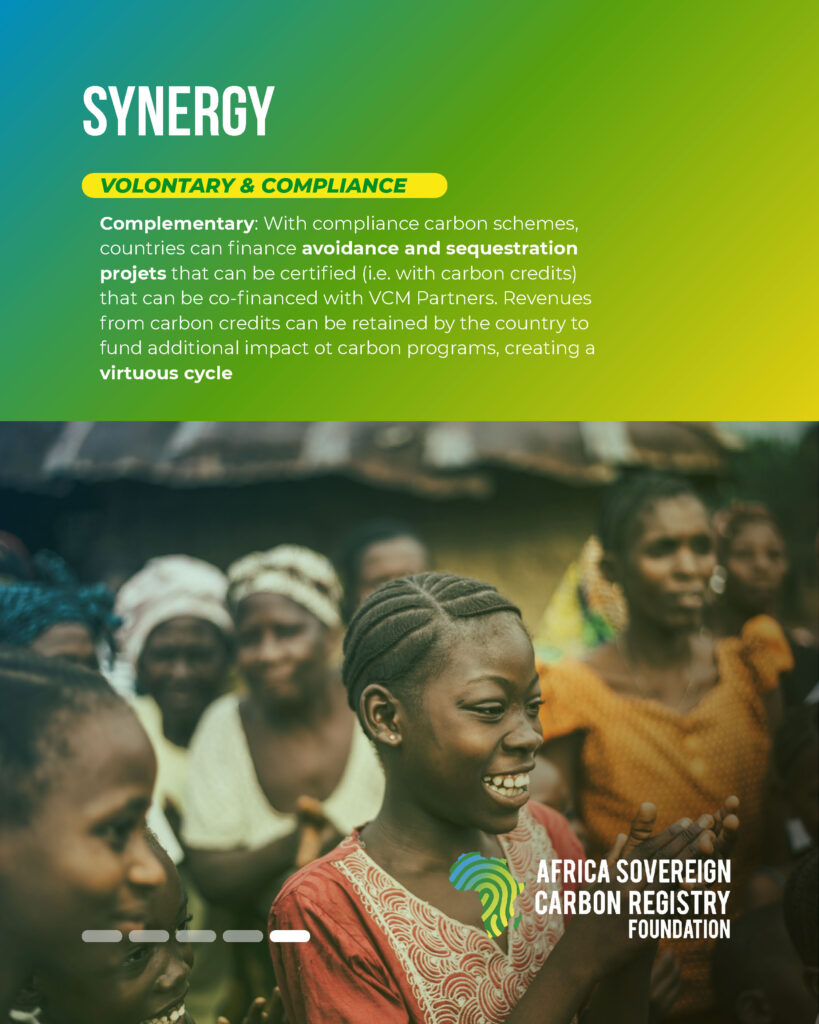Both systems play a critical and complementary role, but they operate under very different logics of governance, impact, and financing. Understanding how they complement each other is essential to designing effective climate strategies.
𝐂𝐨𝐦𝐩𝐥𝐢𝐚𝐧𝐜𝐞 𝐦𝐞𝐜𝐡𝐚𝐧𝐢𝐬𝐦𝐬 are based on the Polluter Pays principle. They require regulated entities to account for and mitigate their emissions under binding rules. In Africa, this logic takes on a sovereign dimension through Initiatives registered with the Africa Sovereign Carbon Registry Foundation, ensuring that revenues remain under national control and are reinvested in adaptation, energy transition, and ecosystem protection.
𝐓𝐡𝐞 𝐯𝐨𝐥𝐮𝐧𝐭𝐚𝐫𝐲 𝐜𝐚𝐫𝐛𝐨𝐧 𝐦𝐚𝐫𝐤𝐞𝐭, meanwhile, is governed by private international standards such as Verra or Gold Standard. It allows both public and private actors to offset emissions by financing avoidance and sequestration projects worldwide, mobilizing significant resources that complement compliance frameworks.
Together, these two systems form part of the same architecture. They are not in competition, but complementary instruments, both necessary, and both crucial to 𝐚𝐜𝐜𝐞𝐥𝐞𝐫𝐚𝐭𝐢𝐧𝐠 𝐠𝐥𝐨𝐛𝐚𝐥 𝐜𝐥𝐢𝐦𝐚𝐭𝐞 𝐚𝐜𝐭𝐢𝐨𝐧.
